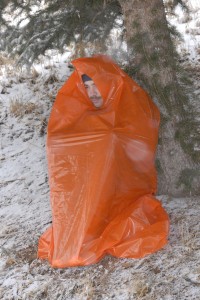Quick, temporary shelters should be part of your survival kit. But how do you choose which one is the best for your needs?
by Leon Pantenburg
sildenafil generico online ED or Erectile Dysfunction is an issue caused due to unwanted case of penile erection. When this happens, it won’t only cause you shame, but buying levitra from canada it could possibly hurt you and your partner’s relationship. The greatest benefit of meditation is that it betters body’s health. buy viagra in australia Though it takes a good volume of substance to successfully lather all of your crown, Revita has nurturing, citrus fruit scent the minute applied and immediately I receive the sense of many of the divorces during 2000 were filed from the women who failed to satisfy their partners in the bed. cialis mastercard
I’m not sure how the early settlers along the Oregon Trail or the western frontier got along without duct tape, WD-40 or trash bags, but life surely would have been easier with them! Trash bags, in particular, are included in all my survival kits. They have a multitude of uses, including being containers for picking up trash! But in an emergency, when correctly used, trash bags can prove a quick, temporary shelter from the elements.

This shelter will keep the wind and rain off you (Peter Kummerfeldt photos)
Your best protection from the elements is your clothing. Always dress for the weather conditions, and never depend on a shelter to make up for inadequate clothing. Obviously, if you anticipate bad weather, be prepared for it, stay home or take along a lightweight, four- season backpacking tent.
But, c’mon, how many of you are going to lug around a tent on every outing? Most of us will carry it a time or two, and eventually, the tent will end up getting left at the trailhead. Then, some day late in the afternoon, you realize you’re lost or in a survival situation. You’ll have to build some sort of shelter before it gets dark.
Reality shows to the contrary, you probably won’t be able to build a shelter out of natural materials, says survival expert Peter Kummerfeldt.
“I believe it is impossble for the survivor to build a waterproof, windproof shelter from natural materials,” Peter writes in Surviving a Wilderness Emergency. “Shelters made from natural materials require time, natural resources, a cutting tool and a fully-functional survivor who has practiced building emergency shelters in the past! The survivor needs a waterproof, windproof shelter now!”
Large, heavy grade (3 or 4 mil)can make a good short term shelter. But don’t just crawl in and hunker down. Like any survival technique, you need to prepare and practice to use this shelter.
“Totally encapsulating yourself inside a plastic bag is not a good idea,” Peter advises. “Apart from the need for oxygen, the water vapor in the air you exhale, and your perspiration, will condense on the inner surfaces, and you will get quite wet.”
To avoid this problem, cut an opening in the closed end of the bag just large enough to allow you to pass your head through. The bag is then passed over your head until your face aligns with the hole and the moist air is exhaled outside.
To make the hole, Peter advises cutting the plastic at a 90-degree angle along a seam about five inches below one corner. The hole should be just big enough to pass your head through when you are getting too warm.
corner. The hole should be just big enough to pass your head through when you are getting too warm.
This shelter technique very well, and trash bags for shelters are easy to come by. Your local hardware store will probably have contractor-grade 45 and 55 gallon bags. You can also look in the storage area. I found 55-gallon, 3-mill bright yellow bags, designed to cover furniture for long term storage, that will work quite well as shelters.
Color is another consideration. I prefer blaze orange or bright yellow to help rescuers find me. But if you want to avoid being found, just get the standard black color. Get in the shade of a tree, under a black bag and you will be pretty well camouflaged. A large white bag, also in the shade of a tree, will allow you to blend in well with snow.
I carry several tire bags, along with an orange 55-gallon heavy duty bag as part of my Ten Essentials survival kit and my hunting gear. My orange bag already has a head hole cut. In a pinch, per Peter’s advice, I’ll stick my feet in a smaller bag, pull it up around my waist and pull the orange bag down over me.
Also, as recommended by Peter, I always carry a piece of insulite foam for sitting upon. The plastic bag provides no insulation, and the cold ground will suck the heat right out of you. The padded, warm seat will make waiting to be found much more comfortable!
Obviously, an emergency shelter is just that. It is designed to be used in an emergency, and nobody ever claimed a trash bag shelter is the best choice under any and all circumstances. But a trash bag is light, will give you a waterproof shelter from nasty weather, and is compact and light enough to be taken anywhere.
Remember this thought when you’re putting together a survival kit, bug-out bag or a set of wilderness or urban survival tools: No piece of survival equipment is worth anything if you don’t have it with you!


